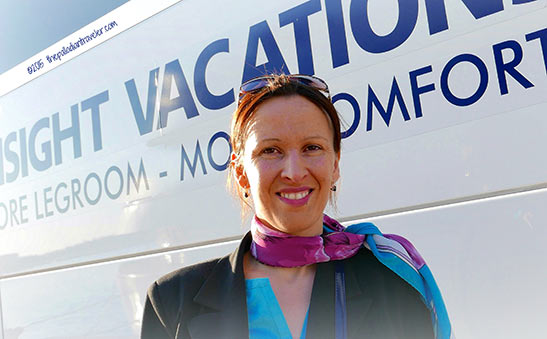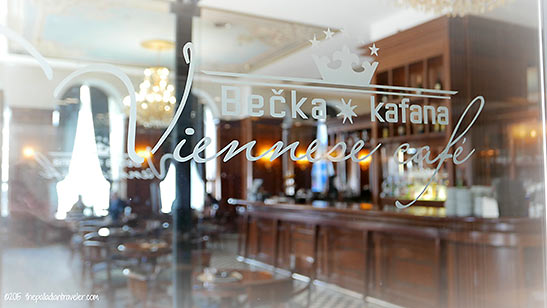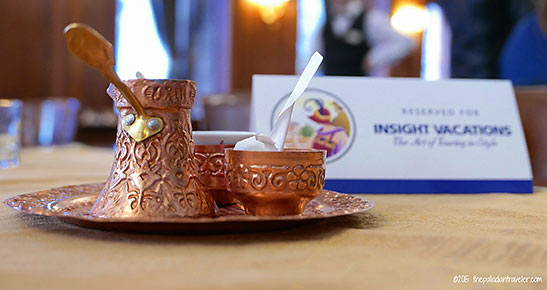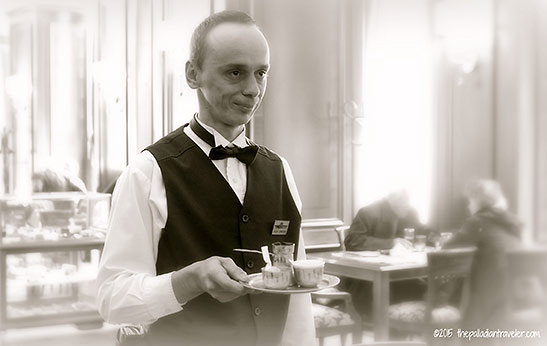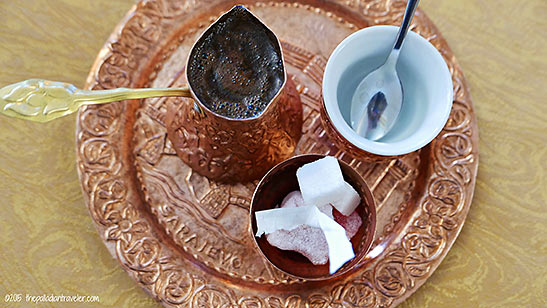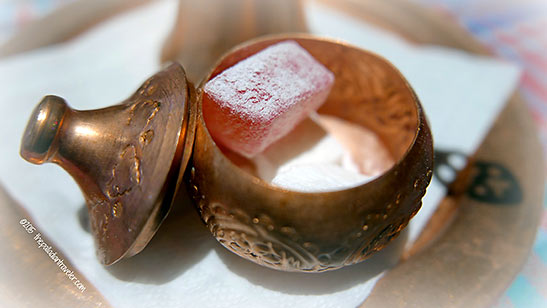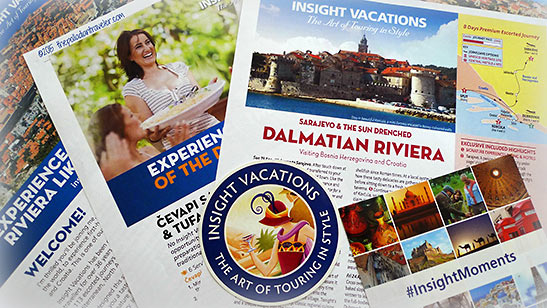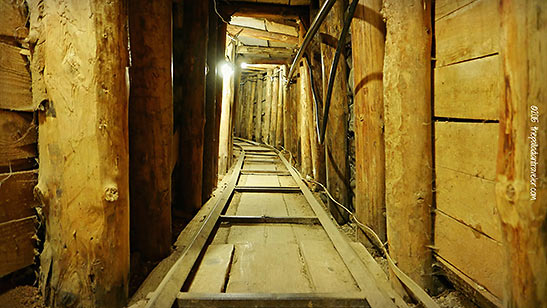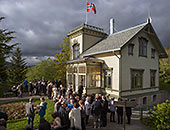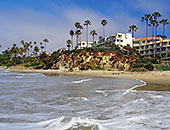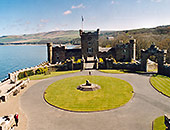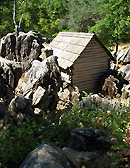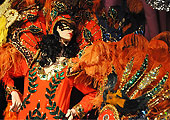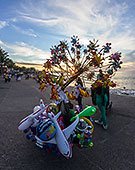 |
 |
|
 |

|
Destination Bosnia:
My Kup Runneth Over with Kafa (Dispatch #6) Story and photos by Tom Weber
"Here in Sarajevo, boys don't ask girls out on a date," observes Karin, our stylish Insight Vacations' tour director/concierge, "instead, they ask them if they'd like to go for a coffee." "Coffee?" we ask, dumbfounded. "Yes," she replies matter-of-factly, "coffee or kafa." Cheekily, I ask Karin if she'd like to go for a kafa with me. Without blinking an eye, she says, "Sure, and I know just the place." Unfortunately, I'm not alone, as the other 17 members of the intrepid "band of merry media" – travel writers and photographers invited along by Insight to sample a portion of its Bosnia and Dalmatian Riviera itinerary – join this "date in search of a caffeine fix," and quickly fall into step right behind Karin.
Near the so-called demarcation line, that section of the city where the Ottoman and Austro-Hungarian Empires of old merged, stands the Hotel Europe, Insight's five-star digs in Sarajevo. And, inside the hotel is the elegant Bečka Kafana where our party of 18 takes a load off to savor traditional Bosnian, not Turkish, coffee. Bosnia has a long tradition of coffee drinking that borders on the ridiculous and dates all the way back to the Ottomans who, in the 15th century, introduced the daily ritual of slowly and deliberately sipping tiny cups of Joe.
Consuming coffee is an obsession that's woven deep into the cultural fabric, and that's why coffee, above all other potations, has been anointed Bosnia's national beverage. No kiddin'. Bosanska kafa begins with the roasting of raw coffee beans. The beans are then ground to a fine powder – even finer than Italian espresso – the old-fashioned way, in a hand grinder. Boiling water is poured into a gently heated copper pot called a džezva, the finely ground coffee is added and stirred, the pot placed back on the stove to boil again just below overflow so that there's plenty of foam, and then brought to your table.
Coffee is served in the džezva, which holds three cups of java, that's presented on a round tray with an empty, ceramic fildžan (small cup) and a dish full of sugar cubes and a rahat lokum, a Bosnian candy that we stranaca (foreigners) might irreverently call Turkish delight. Now, stir the coffee once allowing more foam to rise to the top and then wait a few minutes for the sludge to settle on the bottom of the pot.
Time's up! Skim off a spoonful of foam, pour the coffee into the fildžan and then introduce the foam into the cup. If you like sugar in your coffee like I do, don't plop the cube down into the cup, instead, take a bite of it, place it under your tongue and then take your first sip of Bosanska kafa.
Ah, my kup runneth over with kafa.
For complete information on Insight's premium and luxury-escorted itineraries, including 110+ journeys throughout Europe, just click HERE, or call toll free 1-888-680-1241, or contact your travel agent.
See you back on the motor coach in about 15 minutes – or whenever I slowly and deliberately finish my THIRD cup of kafa – when we'll head to the outskirts of Sarajevo for a chilling walk underground through the historic Tunnel of Hope. Related Articles:
|
|
Feedback for Destination Bosnia: Inside Sarajevo's Tunnel of Hope Spent time in Sarajevo in the fall of 1973…beer was excellent! --- David * * * * Hi Tom, I must say, you're photographs are always amazing. They are top notch. You bring so much class to Traveling Boy. It's photographs like yours that make me want to go out and do my own traveling. Please don't get tired of sending us your amazing adventures. It's such a delight for the soul. --- Raoul, Whittier, CA * * * * Hi Tom: --- David * * * * Hey Tom – Wow! Love those photos – they are so super that they make me A) Want to start eating NOW. B) Go there myself. C) See all that pristine beauty that looks so restful and peaceful. Great story, superb pix!!! Bravo!! --- John, Los Angeles, CA * * * * Feedback for Destination Southwestern France: Saint-Émilion Good job, Tom, and timely info. St. Émilion is in the list of places Jim Hayes and I will visit in September 2014. If we get the chance, we will exploit your experience to enhance the trip! --- Bobby Harper, Dameron, MD * * * * Feedback for Vicenza Walks – Monte Berico I lived in Vicenza for 4 years in the U.S. ARMY from 1963 to 1967. A wonderful place to explore. Palladio’s works are amazing. Have been back twice since and find new places to visit. My favorite is MONTE BERICO where I have some wonderful photos of my family. --- Dr. Albert Pizzi, Hanover, MA * * * * I liked the new TB particularly the Vicenza article that took me back as a youth when we lived in Naples and travelled up there for a baseball tourney (U.S. Military Bases dependent schools played each other.) Took me back to the plaza. --- Bill Feedback for A Canterbury Trail (Sutri) Very interesting note. I have wedroned which route the early pre-Christian and Christian pilgrims travelled to Rome from England. Is it still possible to travel the Francigena trail? --- Pawel You can find out more info on walking tours of Via Francigena at this site: http://www.compagniadeicammini.it/en/. Thanks for stopping by and commenting.. Tom * * * * Good article, enjoyed reading it. Saved your recommended sights for future use. --- Dardenne Prairie, MO * * * * You're going to be great at this Tom. Congrats. --- Donna Vissa -Montreal
|
|
| ||||
|
| ||||
|
| ||||
This site is designed and maintained by WYNK Marketing. Send all technical issues to: support@wynkmarketing.com

|






